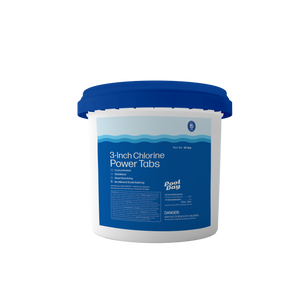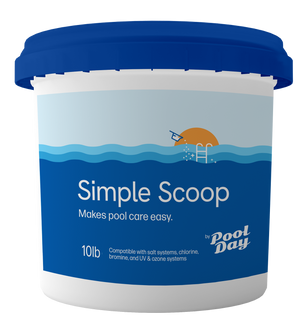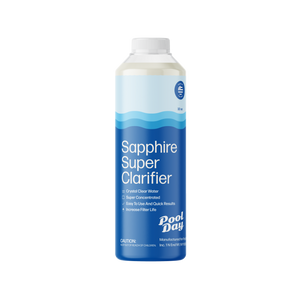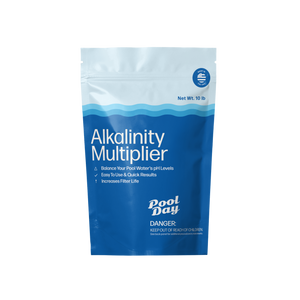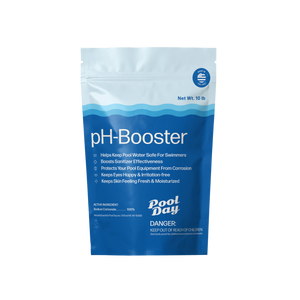Pool Chemistry Tips
How to really keep your pool sparkling clear all year
Weekly Routine
Your standard, once-a-week regimen - that takes 2 minutes!
2 - Minute Pool Care
Simple Scoop
Sanitizer
More Fun!
1. SIMPLE SCOOP
First, pour the required number of scoops of Simple Scoop directly into your pool. Any location in your pool will do - as long as your pump is running, or another water circulation method is active. No premixing or other prep needed.
How many scoops of Simple Scoop do I need each week?
Use the pool calculator to calculateYour pool requires of Simple Scoop every week. Each scoop is 0.5LB.
For complete dosage and application instruction, refer to the product label.
Shop now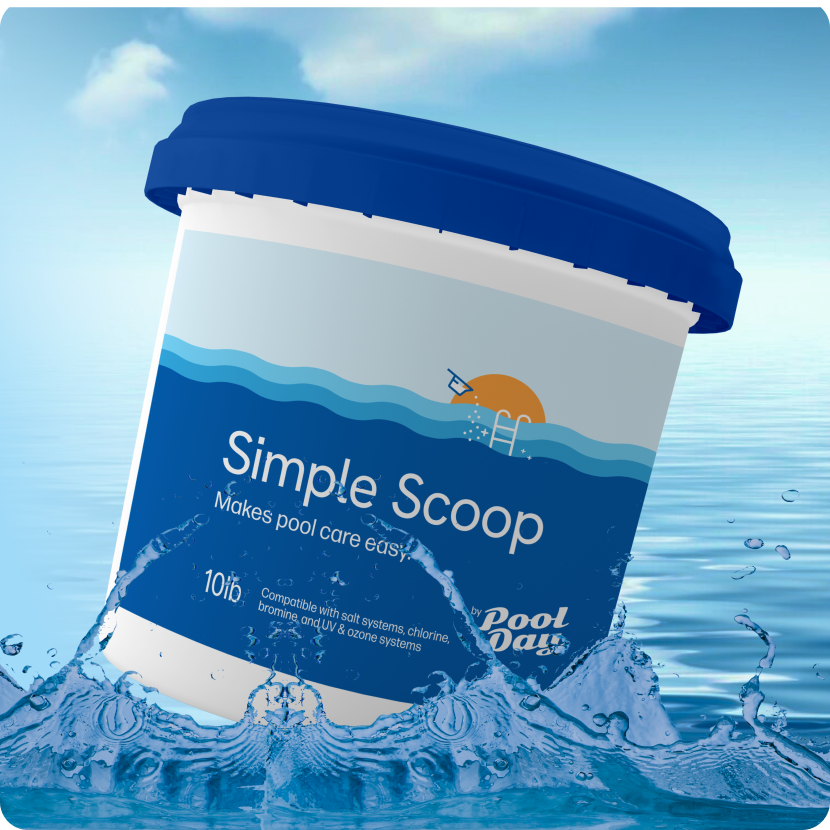
1. SIMPLE SCOOP
2. CHLORINE (OR ANOTHER SANITIZER)
Second, carefully add the right amount of sanitizer to your pool. If you chose chlorine like most people do, chlorine tabs are the easiest application method. Using chemical-safe gloves, place the right amount of chlorine tabs into either:
- A floating chlorine dispenser,
- Your pool’s skimmer,
- Your poolʼs chlorinator.
DO NOT drop chlorine tabs directly into your pool.
How many Pool Day Chlorine Tabs do I need each week?
Use the pool calculator to calculateYour pool requires of Simple Scoop every week. Each scoop is 0.5LB.
For complete dosage and application instruction, refer to the product label.
Shop Now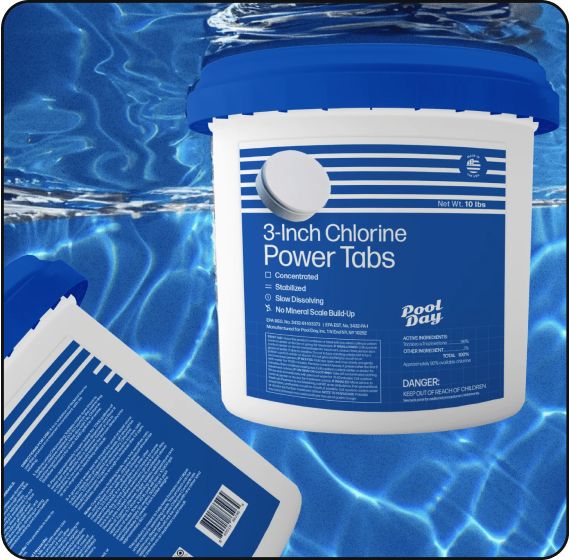
2. CHLORINE (OR ANOTHER SANITIZER)
If you chose a different sanitizer than chlorine (e.g., bromine, UV, ozone), refer to the manufacturerʼs instructions.
The weekly regimen of Simple Scoop + Sanitizer keeps your water clean and pristine. While the sanitizer
kills all bacteria, Simple Scoop balances critical chemical levels (like pH and alkalinity) and prevents
issues like algae before they even occur.
9 out of 10 customers only need this simple 2-step, 2-minute weekly routine. Tricky issues caused by
irregular weather or other factors can pop up for some pool owners.
But donʼt worry! Weʼve got your back - read on to find out what to do if this happens to your pool.
Note: We recommend testing your poolʼs water weekly to check chemical levels, and more frequently if something looks or feels off with your pool.
Targeted Care
For when something seems off with your pool water
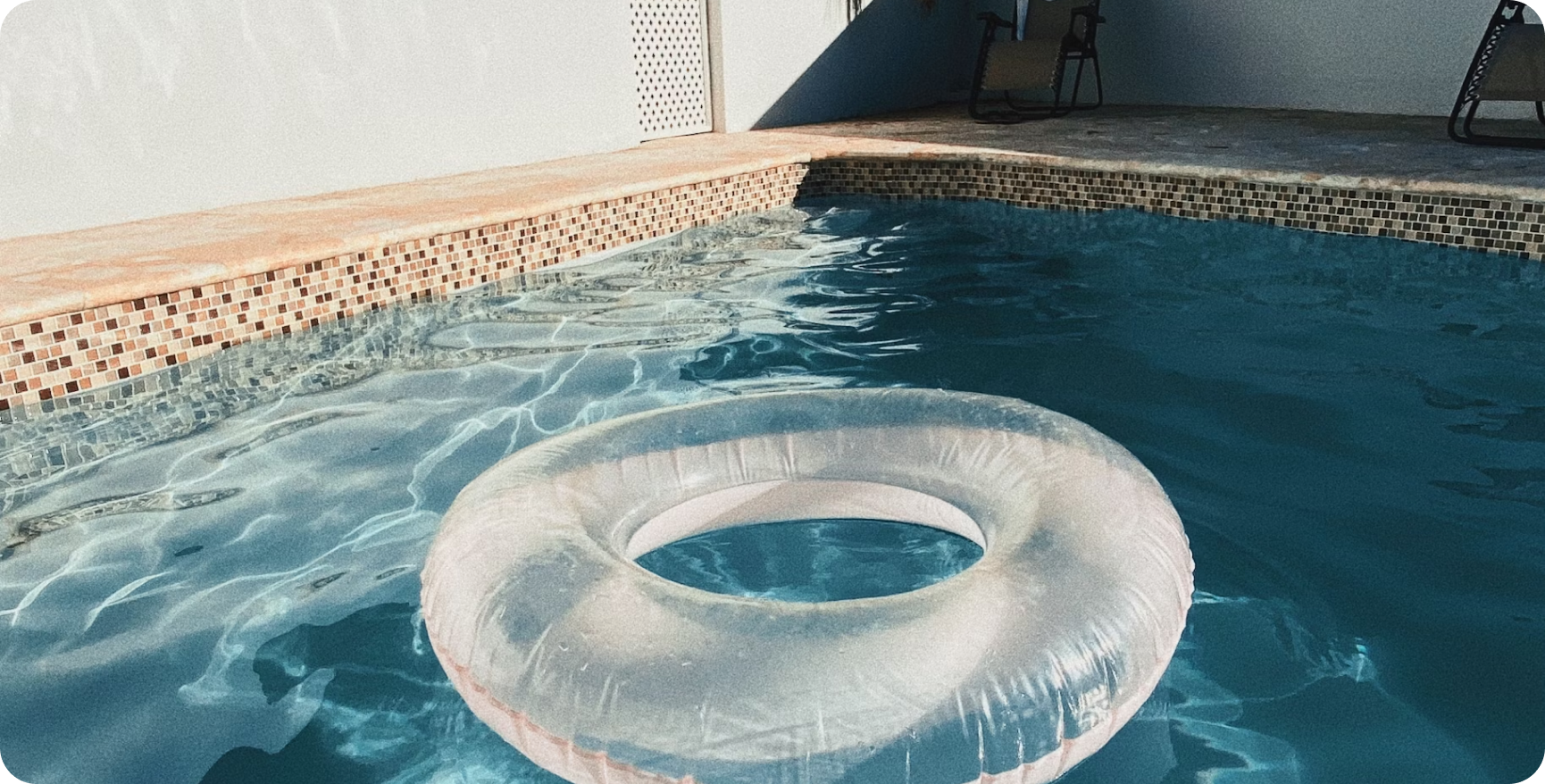
If something seems off with your poolʼs water chemistry, the next step is to test your water. We also recommend testing your water weekly as a precaution. Follow the instructions on your test strip or test kit, then focus on chemical levels that are out of their ideal ranges.
Test strips
Testing is the first step when something looks off with your poolʼs water. There are a variety of testing methods and products, each with different instructions. Here weʼll focus on Pool Dayʼs 5-in-1 test strips, which test for the critical pool chemicals:
- pH
- Total Alkalinity
- Free Chlorine
- Total Hardness (aka Calcium Hardness)
- Total Chlorine
To use Pool Dayʼs test strips, remove 1 strip from packaging and dip it in your pool, slowly moving it back and forth for 5 seconds. Then wait 15 seconds for results to appear.
As indicated on the back of the test strip package, the ideal range for each chemical is:
Ideal Chemical Ranges
- pH: 7.2-7.8
- Total Alkalinity: 80-120ppm (aim for 120ppm - it is fine to go up to 150ppm)
- Free Chlorine: 1-3ppm (aim for 3ppm)
- Total Hardness: 200-400ppm (aim for 230ppm)
- Total Chlorine: equivalent to Free Chlorine level
pH
To increase: If your pH level is too low, swimmers in your pool may be experiencing irritated eyes and itchy skin. To increase pH, add Pool Day pH Booster.
How much Pool Day pH Booster should I add?
Use the pool calculator to calculateYour pool requires of Simple Scoop every week. Each scoop is 0.5LB.
For complete dosage and application instruction, refer to the product label.
Shop Now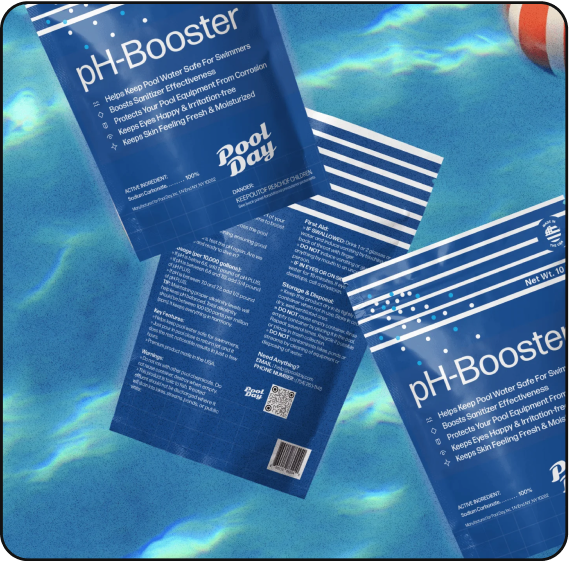
pH
To decrease: If your pH level is too high, decrease it using a pH reducer such as muriatic acid or sodium bisulfate. Follow manufacturer instructions for further guidance.
TOTAL ALKALINITY
To increase: If your Total Alkalinity (TA) level is too low, it can cause your waterʼs pH to decrease and vary widely from day to day. Higher TA levels buffer your pH, making your pool care easier and more predictable. To increase TA, add Pool Day Alkalinity Multiplier.
How much Pool Day Alkalinity Multiplier should I add?
Use the pool calculator to calculateYour pool requires of Simple Scoop every week. Each scoop is 0.5LB.
For complete dosage and application instruction, refer to the product label.
Shop Now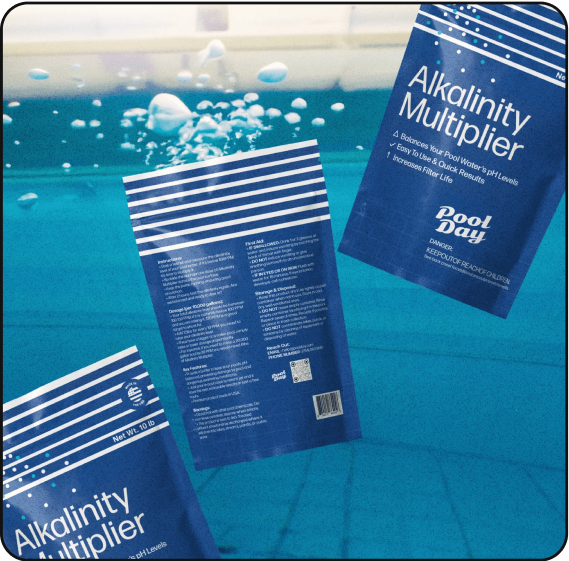
TOTAL ALKALINITY
To decrease Total Alkalinity: It is less common for Total Alkalinity levels to be too high. However, if your TA level is too high (over 150ppm) and is causing a pH increase, you can decrease it with diluted muriatic acid. Follow manufacturer instructions to do so, and be sure to dilute the muriatic acid (e.g., solution with 1 part muriatic acid for every 10 parts water) before pouring it into your pool.
CHLORINE
To increase: If your Free Chlorine level is too low, it puts your swimmersʼ health and safety at risk and needs to be addressed immediately. To increase chlorine, add Pool Day 3-Inch Chlorine Tabs.
How many Pool Day Chlorine Tabs do I need each week?
Use the pool calculator to calculateYour pool requires of Simple Scoop every week. Each scoop is 0.5LB.
For complete dosage and application instruction, refer to the product label.
Shop Now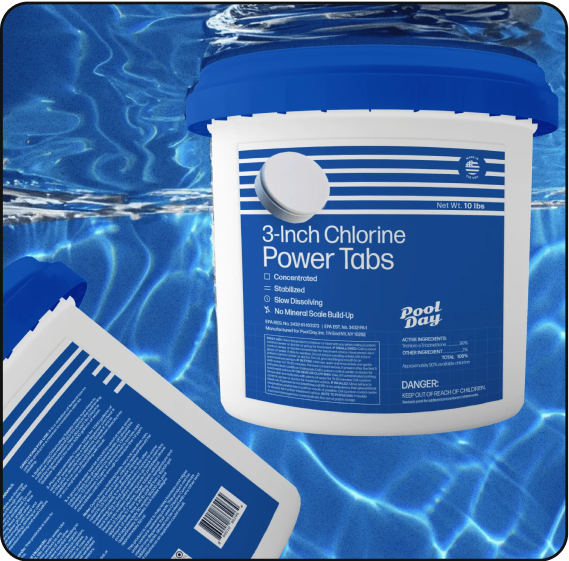
CHLORINE
Using chemical-safe gloves, add chlorine tabs into either:
- A floating chlorine dispenser,
- Your pool’s skimmer,
- Your poolʼs chlorinator.
DO NOT drop chlorine tabs directly into your pool.
Donʼt mess around with chlorine levels! Give your pool 8 hours to disperse the chlorine fully before testing again. It is possible that there are other chemical issues keeping your chlorine levels too low. If so, address these first. Donʼt use your pool until you achieve a safe Free Chlorine level of at least 1ppm.
To decrease: High Free Chlorine levels are less of an issue than low levels. If your poolʼs Free Chlorine is higher than 4ppm, you can decrease it by exposing your pool water to sunlight. If that does not work fully, you can drain or remove some water and replace it.
HARDNESS (CALCIUM HARDNESS)
To increase: If Hardness is too low, it will break down and damage your pool. It will cause corrosion to the metal, concrete, stone, and grout in and around your pool. To increase Hardness, add Pool Day Calcium Hardness Increaser.
How much Pool Day Calcium Hardness Increaser should I add?
Use the pool calculator to calculateYour pool requires of Simple Scoop every week. Each scoop is 0.5LB.
For complete dosage and application instruction, refer to the product label.
Shop Now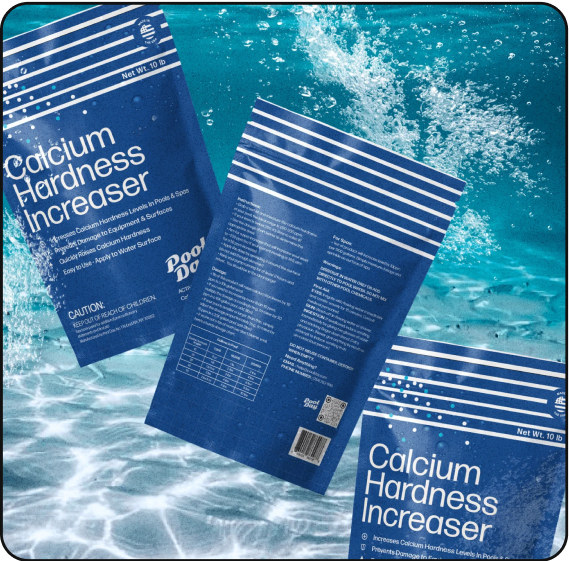
HARDNESS (CALCIUM HARDNESS)
To decrease: Hardness levels being too high is uncommon, and side effects are minor (like cloudy water). To decrease Hardness, remove and replace a portion of your poolʼs water.
The good news on calcium hardness is it tends to fluctuate a lot less than pH and alkalinity. If you make sure it is within the ideal range at the beginning of the season, youʼll likely be set for the year.
CLOUDY WATER
Another common issue pool owners deal with is cloudy water. Sometimes even when your pool chemistry is balanced perfectly, your water doesnʼt look clear and inviting.
To increase water clarity: To make your poolʼs water as clear as it can be, we developed Pool Day Sapphire Super Clarifier.
How much Pool Day Sapphire Super Clarifier should I add?
Use the pool calculator to calculateYour pool requires of Simple Scoop every week. Each scoop is 0.5LB.
For complete dosage and application instruction, refer to the product label.
Shop Now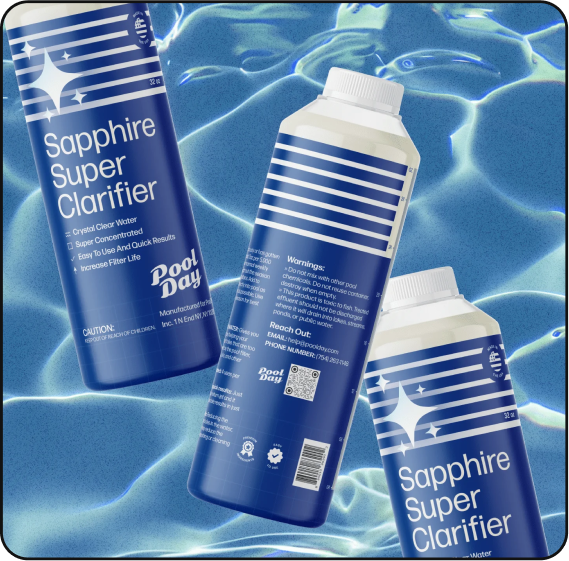
CLOUDY WATER
Opening and Closing Your Pool
What to do at the start and end of your pool season
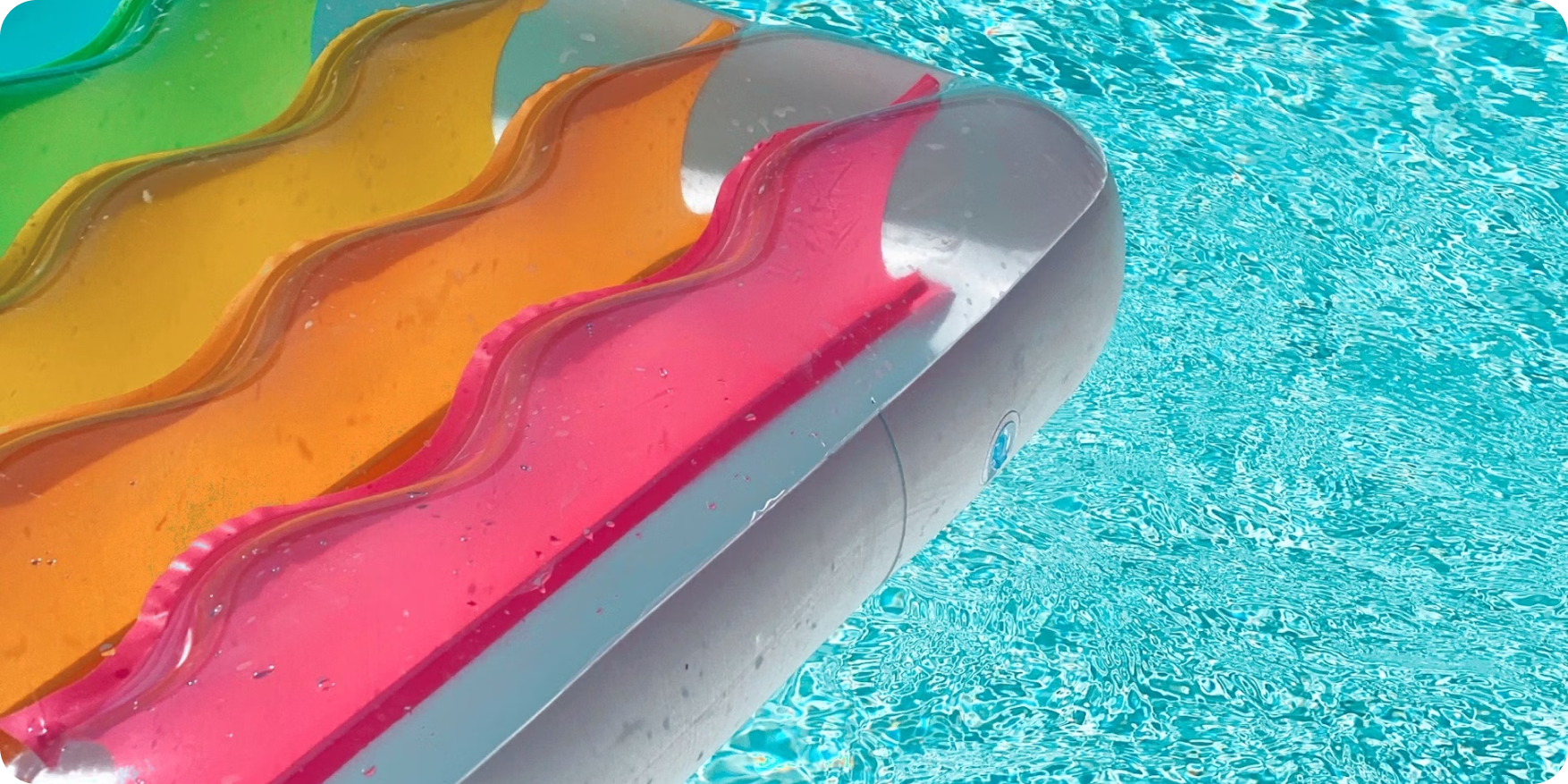
1. SIMPLE SCOOP
We know opening and closing your pool for the season can be daunting. Fortunately, a double dose of Simple Scoop can do the job. Just add twice as many scoops of Simple Scoop to your pool as you would during a normal week.
How many scoops of Simple Scoop do I need to open/close my pool?
Use the pool calculator to calculateYour pool requires of Simple Scoop every week. Each scoop is 0.5LB.
For complete dosage and application instruction, refer to the product label.
Shop now
1. SIMPLE SCOOP
Depending on what shape your pool was closed in the previous season you might have a bit more work on your hands. If your water chemical levels are significantly off or you have an algae bloom when opening your pool, you will likely need to use some shock to jump start your pool for the season. If your pool is in particularly rough shape to start of the season, check out our other content for more guidance.
If you have any additional questions, please refer to specific product pages (with FAQs!) or reach out to us directly via email at hello@poolday.com.
If youʼd prefer a more involved approach, follow the steps above in the Targeted Care section.
Find Your Pool's
Perfect Match


 2 - Minute Pool Care
2 - Minute Pool Care
